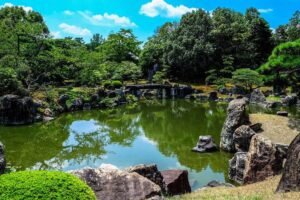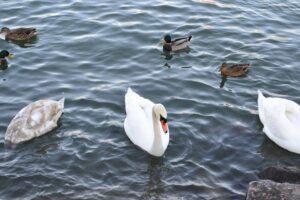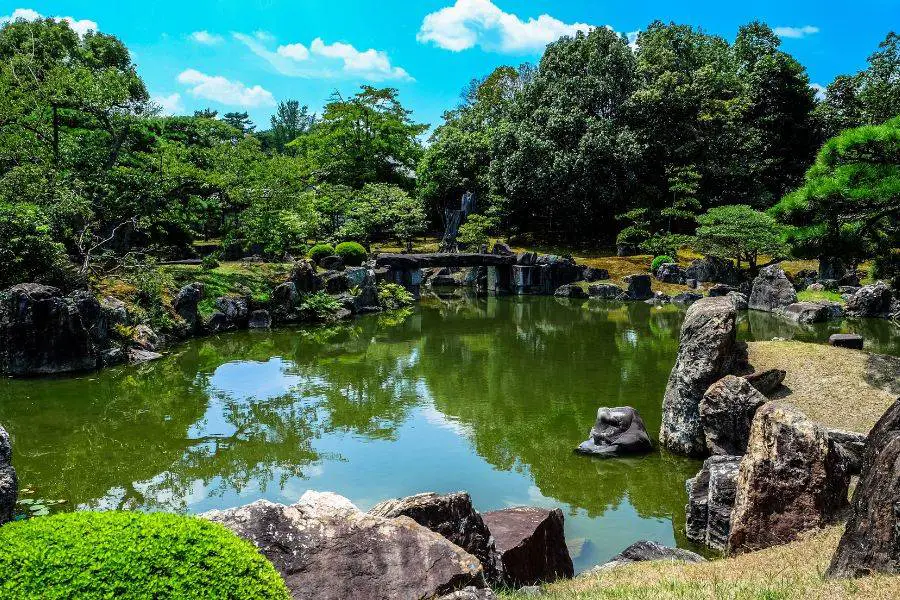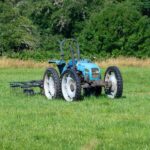Table of Contents
A spring-fed pond is an excellent addition to any property, providing a natural water source for plants and animals.
However, like any other body of water, a spring requires maintenance to keep it clean and work well.
This guide will cover everything you need to know about spring pond maintenance. Let’s get started!

What Is A Spring Fed Pond?
A spring-fed pond refers to a body of water that is naturally replenished by a spring.
The water from the spring flows into the pond and is circulated back out.
Unlike other types of ponds, which rely on rain or irrigation to fill them up, spring-fed lakes are constantly supplied with fresh water.
In addition to being a natural water source for irrigation, domestic water supply, or recreational purposes, spring-fed ponds also tend to be very clear and clean.
Why Is Spring Fed Pond Maintenance Important?
Spring maintenance is essential because it helps to keep the pond clean and to function as expected.
A well-maintained pond will have clear water, healthy plants, and a balanced ecosystem.
Without proper maintenance, ponds can become overgrown with vegetation, filled with algae, and infested with pests.
What Happens If You Don’t Maintain Your Spring Fed Pond?
If you don’t maintain your spring pond, it can become overgrown with vegetation, filled with algae, and infested with pests.
These issues can result in the water becoming dirty and unsafe to drink, the plants dying, and an imbalanced ecosystem.
In addition, if you live in an area prone to flooding, a poorly maintained pond can cause flooding by absorbing too much water from the surrounding area.
How To Fix Common Spring Fed Pond Maintenance Problems
There are a few common pond maintenance problems that you may encounter. These include:
Algae Growth
Algae growth is one of the most common pond maintenance problems.
Algae can cause the water to become murky and green, making it difficult to see the bottom of the pond.
In addition, algae can choke off oxygen from the plants and animals living in the pond, causing them to die. There are a few ways to prevent algae growth, including:
- Keeping the pond clean
- Introducing pond plants
- Using an algaecide
Pond Liner Leaks
Pond liner leaks are another common problem that you may encounter.
If your pond liner leaks, it can cause the water level to drop, leading to algae growth and making it more difficult for plants and animals to survive.
There are a few ways to fix pond liner leaks, including:
- Repairing the leak
- Replacing the liner
Pest Infestations
Pest infestations are another common problems that can occur in ponds.
Pests can cause damage to the plants and animals living in the pond, as well as to the pond itself.
There are a few ways to prevent pest infestations, including:
- Keeping the pond clean
- Introducing pond predators
- Using pesticides
How To Clean A Spring-Fed Pond
Manually removing debris
Manually removing debris is the best way to keep your pond clean.
You should remove any dead leaves, twigs, and other organic matter you see.
This step will help to prevent the build-up of algae and bacteria.
Using a pond vacuum
Using a pond vacuum can also help keep your pond clean.
A pond vacuum can reach places you may not be able to with a net.
Be sure to empty the vacuum bag often, so it doesn’t become overloaded and leak.
Cleaning the filter
Cleaning the filter is another essential part of cleaning a spring pond.
The filter helps to remove debris and keep the water clean.
You should clean the filter according to the manufacturer’s instructions.
How To Maintain A Spring-Fed Pond
Maintaining a spring pond is essential to keep it functioning correctly.
There are a few different ways that you can maintain a spring-fed pond, including:
Cleaning the pond
Cleaning the pond is one of the most important things you can do to maintain a spring lake.
Consider washing the pond every week or two to remove any accumulated debris.
Testing the water
Testing the water is also essential to ensure that it is safe for the plants and animals in the pond.
You should measure the water for pH, ammonia, nitrites, and nitrates.
Adding plants
Adding plants to a spring can also help to maintain it.
Plants help to keep the water clean and provide oxygen for the fish.
You should add a variety of plants to your pond, including floating plants, submerged plants, and marginal plants.
How Can I Make My Spring Fed Pond More Efficient?
There are a few things that you can do to make your pond more efficient. These include:
Adding a pre-filter to the spring
A pre-filter is a type of filter placed over the spring to catch any debris before entering the pond.
This tool will help to keep the pond clean and clear.
Adding a pump to circulate the water
Adding a pump to circulate the water can also help make a spring pond more efficient.
The pump will make it easy to move the water around, so it doesn’t become stagnant.
Installing a waterfall or fountain
Installing a waterfall or fountain can also help make a spring pond more efficient.
The waterfall or fountain will aerate the water and help to keep it oxygenated.
Does Spring Water Make Good Drinking Water?
Yes, spring water is safe to drink.
Many people use spring-fed pond water for household needs, such as cooking and bathing.
You might only want to avoid using spring pond water if the pond is located downstream from a factory or other industrial site.
In these cases, the water may be contaminated with pollutants.
Therefore, it is still essential to test spring water before using it to be sure.

Advantages/Benefits & Disadvantages of Spring-Fed Ponds
There are many benefits to having a spring. However, they also come with their unique disadvantages.
Benefits
How a pond regulates the temperature of the surrounding area
A spring-fed lake helps regulate the surrounding area’s temperature by releasing cool water into the air.
This process can help to lower the temperature on hot days, making it more comfortable to be outside.
How a spring prevents flooding
A spring can help to prevent flooding by absorbing excess water from the surrounding area.
The spring-fed ponds are constantly filled with fresh water, which means they can hold more water than other types of ponds
How a spring provides a home for wildlife
A spring-fed lake can provide a home for wildlife by offering them a source of water and food.
Many animals, such as frogs and fish, rely on ponds for survival.
How a spring lake attracts birds and other animals
A spring-fed lake can attract birds and other animals by providing them with a place to drink, bathe, and cool off.
Birds also use ponds to build their nests, which can help to attract more birds to the area.
The clean, fresh water is ideal for fish, amphibians, and reptiles, while the vegetation around the pond can provide shelter and food for various other animals.
The water is constantly being refreshed
Since the water is supplied by a spring, it is constantly refreshed.
Therefore, the water is less likely to become stagnant and will be safe for use.
The water is usually clean and clear
Springs are often known for having clean and clear water.
The spring water is continually filtered as it enters the pond.
Spring-fed lakes are less likely to dry up during times of drought
Since the spring supplies the pond with water, it is less likely to dry up during times of drought.
This point can be beneficial if you live in an area prone to droughts.
There is little to no maintenance required
Ponds require little to no maintenance because the spring constantly supplies the pond with water, so you don’t have to worry about refilling it.
Disadvantages
The water level can fluctuate
Since the water level is determined by the amount of water flowing from the spring, it can fluctuate.
This issue can be problematic if you rely on the pond for irrigation or domestic water supply.
The quality of the water can vary
The quality of the spring water can vary depending on the source.
If the spring is located near a polluted area, the water in the pond will lower its quality.
Spring-fed lakes can be expensive to build
Ponds can be expensive to build, depending on the size and depth of the pond.
If you are planning on building a spring-fed pond, you should consult with a professional to get an estimate
Takeaway
Spring-fed lakes are a great way to add beauty to your property and provide a home for plants and animals.
However, they require some maintenance to keep them functioning correctly.
Be sure to regularly clean the pond, test the water, and add chemicals as needed.









